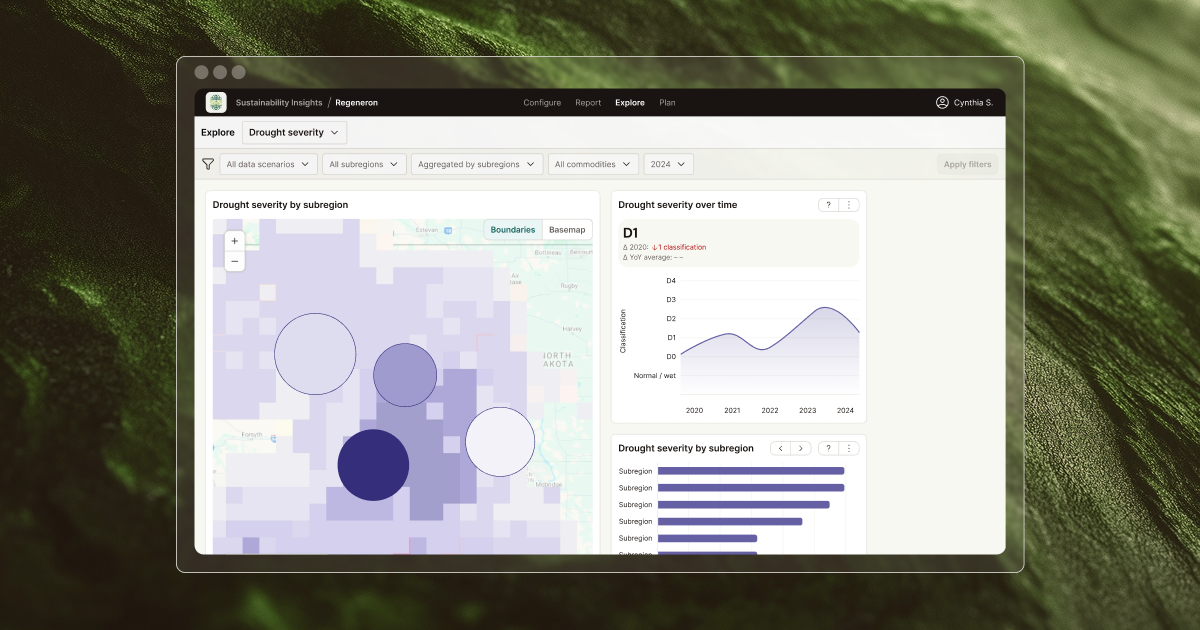Note: In 2021, FluroSat and soil health startup Dagan combined forces to become Regrow. Up-to-date information about the Regrow platform can be found on regrow.ag.
Defining the optimal Nitrogen rate to find the balance between maximising yield, ROI, and avoiding Nitrogen losses in the soil profile, is a major challenge for agronomists and farmers. See how we've developed the tools to solve this challenge and make the process less reactive and risk-prone.
Steve, a senior agronomist at Kerin Landmark Rural, a Nutrien Ag Solutions Partner, in South Australia, is constantly working to improve his recommendations to help producers face increasing risks and irregular rainfall.
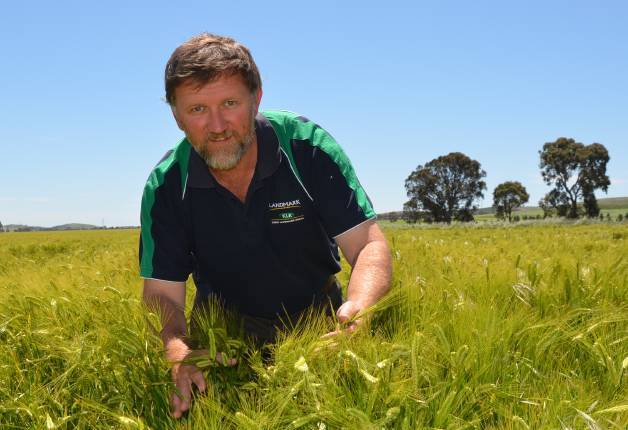
Steve is dedicated to bringing technologies and innovation to growers and improve management practices. He has been working with FluroSat for years, validating and tunning the Nitrogen model based on his experience. He sees FluroSense Nitrogen recommendation as a guideline to adjust his recommendations, based on specific criteria to each field (soil, variety, Nitrogen uptakes) and seasonal conditions (weather, prices)
This case study presents the analysed of the results for one of Steve's Nitrogen trial in wheat by comparing the efficacy of the Nitrogen recommendation made by FluroSense N Rx module compared to grower's standard practice.
Trial design
With the objective to define the optimal Nitrogen rate for in-season N application in winter wheat, 3 doses of urea were applied in strips on July 23 (middle of the winter season in Australia) with the following application rates:
- 1kg (pink)
- 20kg (red) and
- 40kg (blue, Fig.1 ).
FluroSense nitrogen recommendation module - N Rx recommended the application of 24 kg/ha of urea on July 23, compared to the grower standard practise of 40kg/ha.
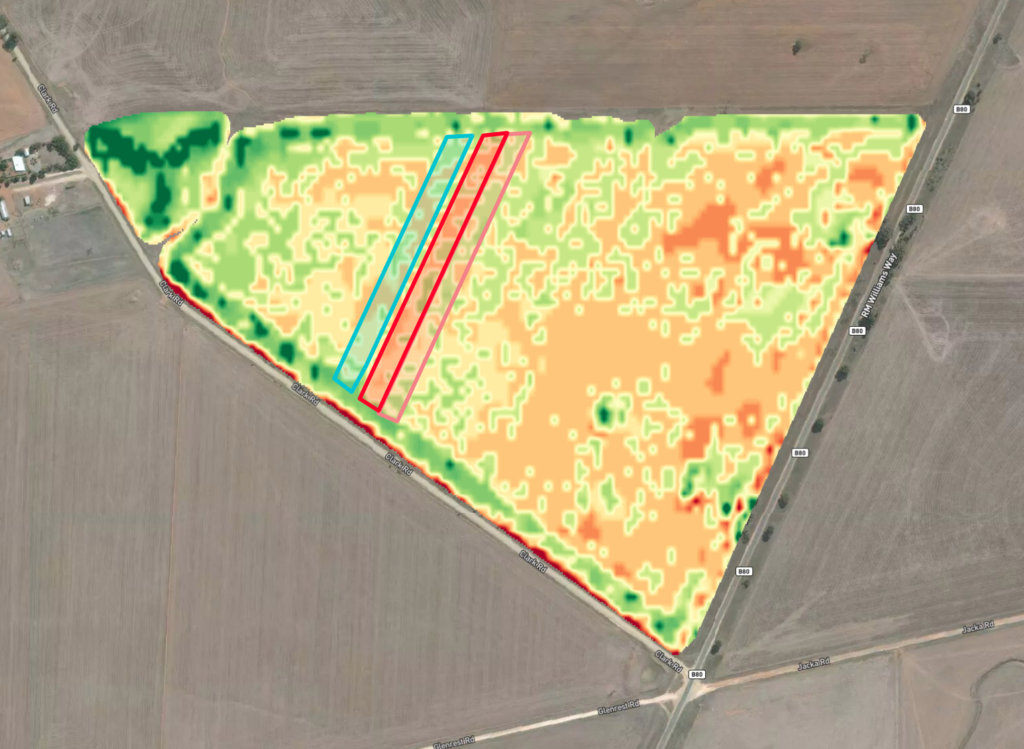
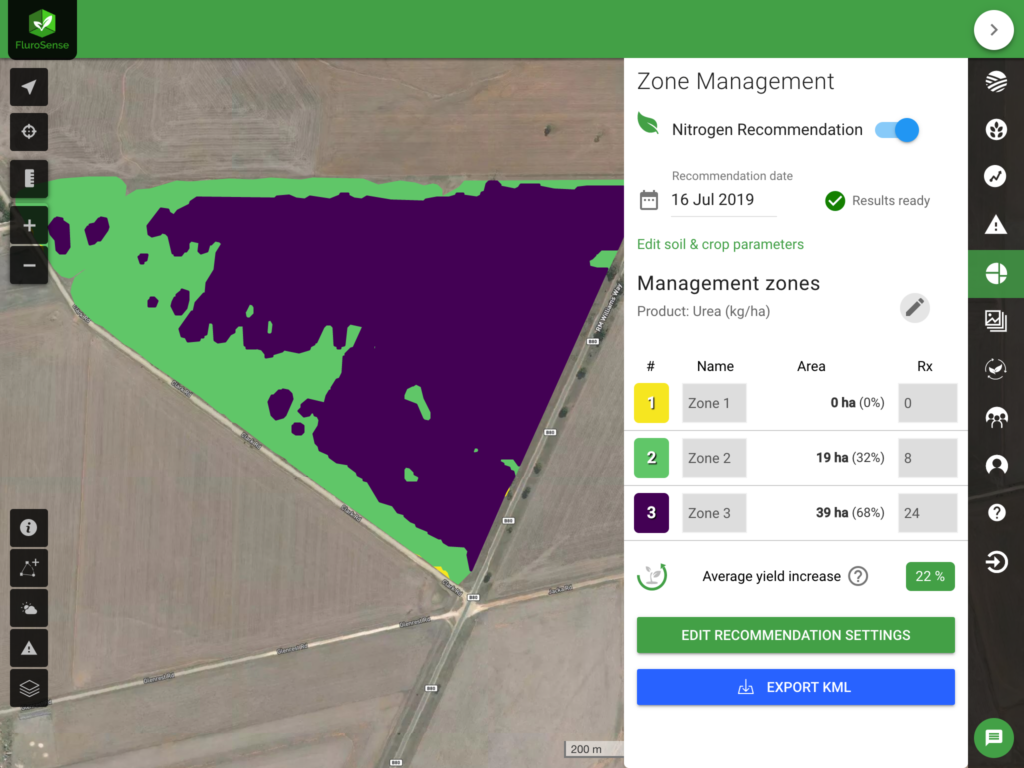
Nitrogen response analysis
Using satellite imagery, FluroSense measured the chlorophyll index (CCCI) for each application rate. CCCI is a vegetation index, well correlated with the chlorophyll content of the leaves. By analysing its evolution of this index over the course of the season, agronomist can get an estimate of the nitrogen availability to the crop in the field:
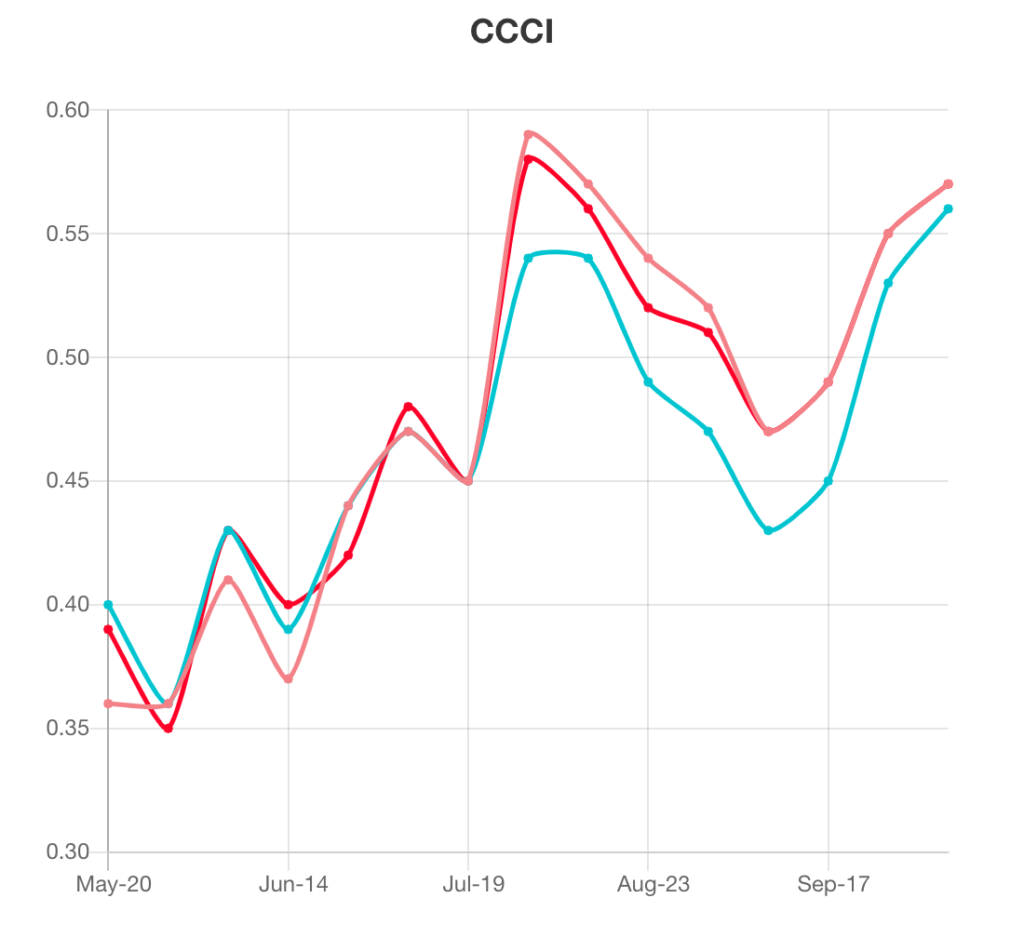
- By July 19, chlorophyll is decreasing and suggests that the field develops nitrogen deficiency and requires an additional application.
- On July 29, only one day after the effect of the Nitrogen application is already visible with a 24% increase in the chlorophyll index.
- After July 29, chlorophyll index of the crop that received 20 and 40 kg/ha applications is noticeably higher (+9%) compared to 1 kg/ha application.
- After July 29, the chlorophyll index of the crop that received 20 and 40 kg/ha remains similar throughout the rest of the season, indicating that the lower application rate (closer to the one recommended by the FluroSense N Rx model) would have been sufficient.
Summary
In this case study, FluroSense nitrogen recommendation model suggested optimal Nitrogen rate, which would have helped the grower to avoid over-fertilisation, and maximised the ROI. The model takes into account numerous parameters, including in-season satellite data, pre-season N application, and economic factors to provide greater accuracy in nitrogen management while making it easy for agronomists to use.
.png)

